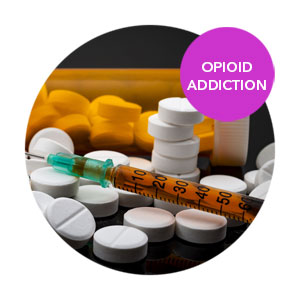OPIOID ADDICTION
In working with patients at CeDAR, we will often review the course of someone’s addiction. Was there a progression in some way? Did things get worse quickly or gradually? In discussing opioid addiction, we often review if there was a trajectory through opioid painkillers. At some point did people ultimately become addicted to heroin? This article looks at some of the published research on this topic.
This 2016 article in the New England Journal of Medicine shares pretty concise numbers talking about this transition taking place for opioid abusers.
Non-Medical Use
Some of the take-home points discussed are as follows:
- A 2003 study in Ohio reported that 50% of new heroin users reported past opioid painkiller abuse, specifically that of Oxycontin
- A 2008 study from both New York and Los Angeles reported 86% of IV heroin users using opioid painkillers in a nonmedical way before transitioning
Numerous other studies report similar findings that heroin users seemed to have started with opioid painkillers prior to transitioning. This is also in contrast to 1960s data. Primary initiation of opioid use during that time was through heroin itself. It was not through prescription-grade opioids as occurs today. One could speculate about different reasons for this. The robust supply of opioids being prescribed beginning in the early 1990s seems the core reason.
Majority Do Not
The article also listed additional research which indicated the vast majority of opioid painkiller abusers DO NOT transition to heroin in nearby years. Between 1 and 5 years within abusing opioid painkillers, 3.6-4.2% of those users also used heroin. An explanation we could consider is the risk of heroin use for every additional painkiller-using year. This would incorporate some of the economic factors at play such as the sustainability of a more costly addiction. Sustainability eventually crumbles.
In Denver, new reports indicate aftermarket value of opioid painkillers (typically oxycodone) is now more than $1 per milligram. It’s up to $2 in some instances. Over the last five years, historical prices have stayed constant at around $1 per mg. Some fluctuation would also include things like paying a premium to have a large supply of pills at the same time (so buying in bulk may not actually offer you a deal) or the specific product (OxyContin, Opana ER, and Dilaudid being some of the most valuable). Painkillers are more valuable than ever before.
The Oxycontin Abuse-Deterrent Reformulation
As discussed above, the heavy-hitter opioid painkiller has been OxyContin for multiple years. Prior to the efforts by the CDC and hospital centers to curb the opioid epidemic through more regulated prescribing practices, one of the interventions that may have contributed to greater heroin use was the abuse-deterrent measures placed on OxyContin. In 2010, the manufacturers of OxyContin changed the physical structure of the pills from a powder form to more of a ‘Skittle’ tablet. This change prevented users from grinding down the pill and snorting it. The resultant data following this 2010 change is quite informative and connects closely with our discussion of opioid transitions.
As cited in this NEJM article, OxyContin use decreased from 35.6% to 12.8% over a 21-month period, post-change. Over that same time, high-potency prescription opioid use increased from 20.1% to 32.3% and 66% of the respondents in this study reported switching to something other than OxyContin as the primary opioid of choice. Heroin was the most reported switch-target for this study.
Cicero, Theodore J., Matthew S. Ellis, and Hilary L. Surratt. “Effect of abuse-deterrent formulation of OxyContin.” New England Journal of Medicine 367.2 (2012): 187-189.
In summarizing some of the findings from the OxyContin abuse-deterrent change, we can assume that it will not primarily curb addiction itself. The users will find alternative opioids to satisfy the cravings and continue the addiction cycle.
Transitions – Noninjecting Heroin Users to Injecting Users
Many patients who make the transition from painkillers to heroin will at first smoke or sniff the drug. This eventually moves into intravenous drug use for many clients, and with that comes elevated risks for overdose, HIV/HCV, and increased medical care from the addiction. This article reviewed factors at play amongst surveyed users who transitioned from noninjecting to injecting. Some of the core findings were that earlier age of first heroin use, the presence of sex partners who also used heroin, and perceived perceptions from peers about IV use were associated with injection use patterns.
Final Thoughts
Overall, heroin use disorder seems to carry the greatest risks for mortality and poor outcomes across the spectrum of opioid use disorders. Markers predictive of heroin use disorder seem to be complex, but literature does support some behavioral transitions connected to prescription opioid factors. The eventual stepwise transition from opioid painkillers to smoked heroin, to injected heroin, is the scenario we fear as clinicians, as lethality seems to increase incrementally with each of these steps up the chain in opioid use.
Read more CeDAR Education Articles about Opioid Addiction including Buprenorphine.




